Harness the potential of 8 expertly crafted internal email best practices for seamless employee communication and collaboration.
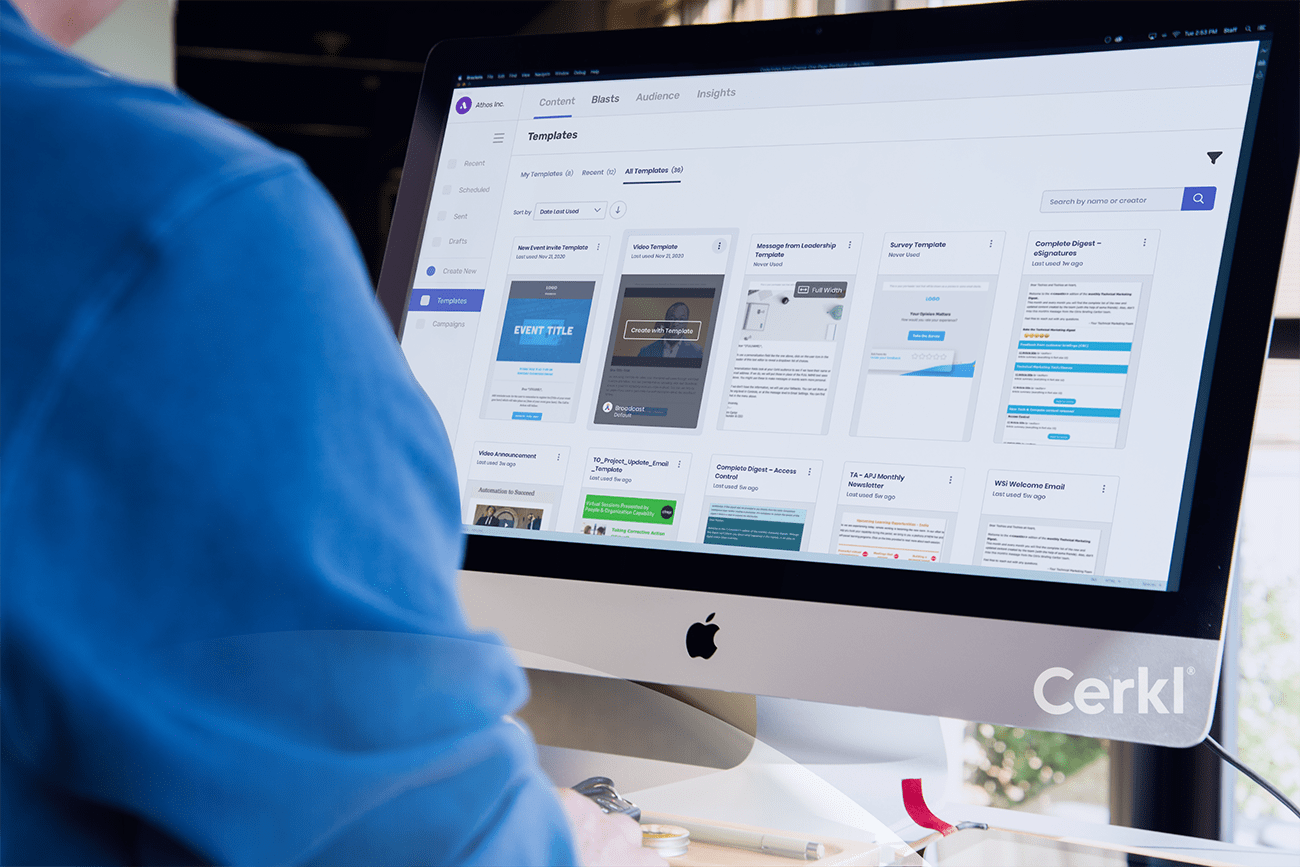
.png)
Strategy is an important component of internal communications. Ensure you’re communicating through the right channels at the right frequency with our Internal Communications Channel Audit worksheet.
Access Now
Internal email is a critical workplace tool. However, without the right strategy, messages may be ignored or ineffective. To make internal email impactful, organizations must focus on clarity, relevance, and engagement. This post explores the fundamentals of internal email and its effectiveness.
Effective communication in the workplace increases engagement, productivity, trust, and employee retention. Poor communication, on the other hand, can cause financial losses, stress, and high employee turnover.

Email remains one of the most popular and effective forms of both internal and external communication. A survey by project.co states that 31% of respondents claim that email is the primary method of communication with their coworkers. With 62% usage, email is the most popular method of client communication. However, just having an email system isn’t enough. Without best practices it can be counterproductive. Internal emails should be secure, concise, and strategically crafted.
An internal email is a message sent within an organization to share important information, updates, or announcements with employees. Unlike external emails, which are used for communication with clients or stakeholders, internal emails focus on keeping teams informed, aligned, and engaged. However, not all content is best suited for email.
Generally, internal email isn’t the best channel for sharing lengthy internal documents or information that employees may need to reference over time. Instead, it works best for news snippets, downloadable newsletters, and important notifications or reminders. This is especially relevant since the average employee typically spends only two to three minutes reading an internal email.
Also, if you don’t tailor emails in terms of both content and audience, employees will likely ignore them. If emails are too long, even if staff members read them, they may miss the point. If they go to a mass audience, it’s highly unlikely they’ll be relevant to everyone.
In today's fast-paced work environment, it's essential that internal emails remain engaging and effective. According to a 2024 article by McKinsey & Company, leaders can enhance employee engagement by embedding clear and purposeful communication strategies within their organizations. By implementing these timeless strategies, organizations can foster a culture of open and effective communication, leading to increased productivity and employee satisfaction.
“Employees may not be reading their own email. There is a loss of meaning unless you put it back into a real-life context.”
McKinsey & Company
Internal email is an accessible and trusted form of communication. It provides a reliable internal platform for sharing knowledge with employees. It is also enormously useful for important announcements including policy updates, organizational changes, and new initiatives. Internal email also facilitates feedback loops and collaborative discussions. Employees can share feedback, brainstorm ideas, and work together on projects through email exchanges.
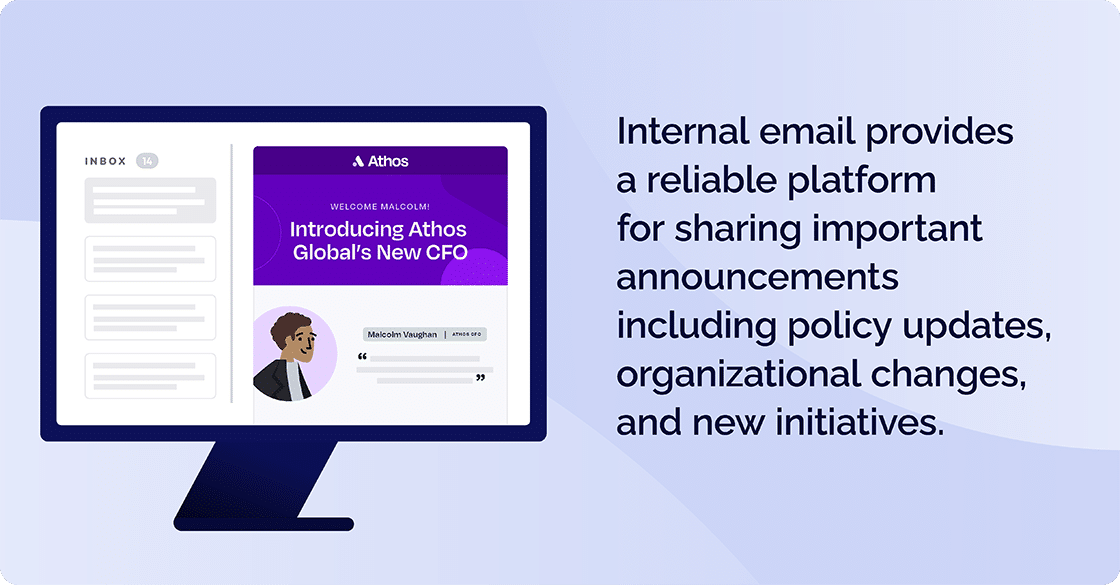
Well-designed, contemporary email platforms have powerful design capabilities. This is because they provide the opportunity to craft interactive newsletters, collect feedback from employees, and manage events, all within a single email platform. When they offer internal communication email templates, they also save time and increase both impact and overall productivity.
However, to maximize the usefulness of an internal email program, it is important to measure and analyze the effectiveness of internal communications shared via email.
There are several key issues to consider when choosing an internal email platform. By systematically evaluating these factors, you can make an informed decision and select the best employee communication software that aligns with your organization’s unique needs and objectives.
First, you should identify your business needs in terms of the number of users, storage needs, security, and collaboration features. Choose a platform that can scale with your business’s growth, ensuring it meets your future needs. Prioritize platforms with robust email security features and compliance options to protect sensitive data. Assess how well the email platform integrates with your existing software and tools, such as modern CRM systems or productivity apps.
Be sure to consider the platform’s ease of use for both administrators and end-users. Also, make sure that the internal email platform offers a seamless experience on mobile devices, as mobility has become increasingly important.
Absolutely — yes, they do. Procuring the perfect internal email platform is just the beginning. You also need strategies to effectively enhance communication, productivity, and collaboration while minimizing misunderstandings and email overload. Good internal email best practices can also help to streamline communication, reduce email-related stress, and improve overall productivity within your organization.
But what are internal email best practices? What does this term mean?
Typical examples include personalized emails, using descriptive subject lines, keeping content clear, concise, and well organized, and highlighting key information. Compelling design using colors and graphics will attract attention — particularly when these align with your brand. More importantly, access to internal communication email templates simplifies this function even for those with graphic design knowledge.
Above all else, internal email communications need to be clear, concise, and effective. Whether you’re introducing new team members or sharing news, content needs to be relevant and to the point. Utilizing short paragraphs, adopting an informal tone, and incorporating a well-defined call to action can boost engagement and elicit higher response rates from your workforce. If you’re struggling to shorten text or subject lines, a possible solution is to use a paraphrasing tool.
Ultimately, it’s a good idea to formulate a strategy for your organization’s best internal email practices. Many organizations do this, and their strategies are certainly not all the same. Yours should align with everything your organization stands for.
As an example, the University of Oregon has a very specific email policy. This includes the appropriate use of internal mass email, which is only used when it is critical or time-sensitive, and it relates to most recipients. Inappropriate use is also detailed along with emails that require official approval and authorization. Their internal email best practices guide is relatively short and sweet. Guidelines include:
Members of the Forbes Communications Council, all leading experts in their fields, share their insights in Best-Kept Secrets of 15 Comms Pros for Drafting Effective Internal Emails.
Here are some of their most valuable tips for an internal email:
These best practices have stood the test of time and remain essential for crafting impactful internal emails that drive engagement and clarity.
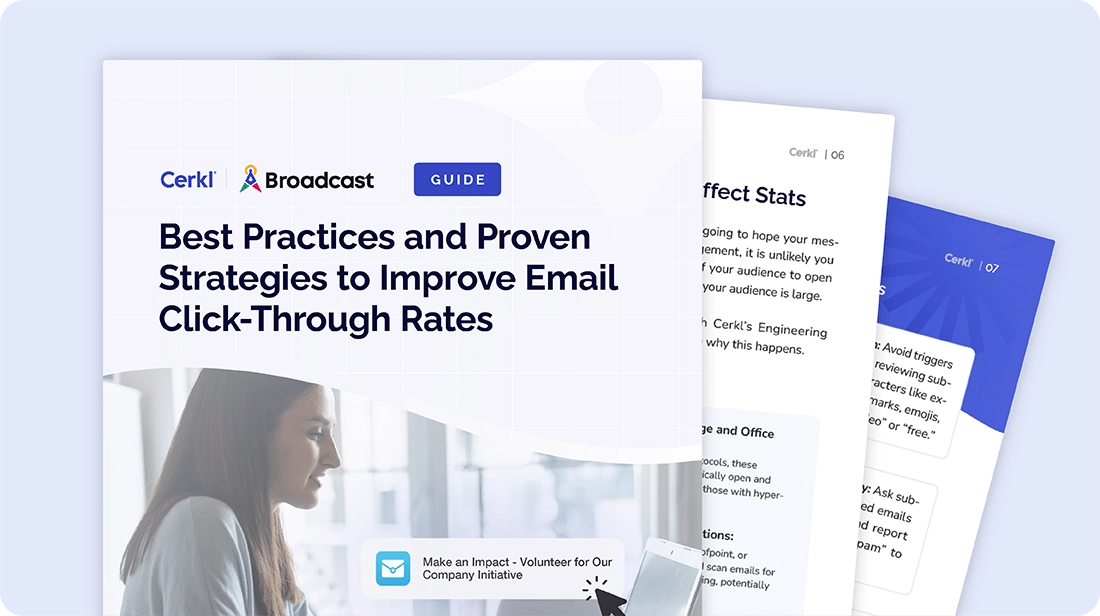
Measuring and understanding email analytics is crucial for evaluating the success of your email marketing campaigns and improving their effectiveness over time. Here are some guidelines that will help you to effectively measure and understand them.
As Google points out, the most important email metrics you need to measure are the open rate, click-through rate, conversion rate, and unsubscribe rate.
Adobe adds several elements to this list including the bounce rate, forward and sharing rates, and list growth rate. Emails bounce for all kinds of reasons, and if any of your employees’ emails are bouncing, you need to find out why. Forward and sharing rates will only be important if you need employees to forward or share email. It’s more likely that a business won’t want internal emails to be shared.
But all things considered, the question is, which of these metrics will help you evaluate internal email strategies? Undoubtedly the open and click-through rates, both of which can be provided by Cerkl products.
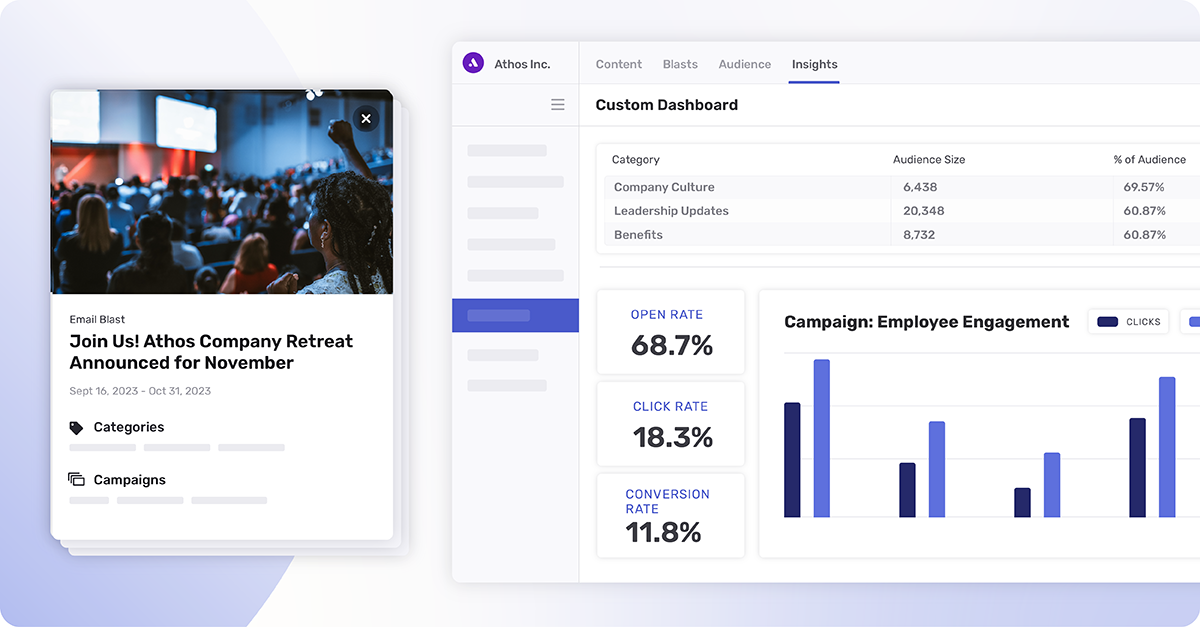
Cerkl CEO Tarek Kamil recently presented with Steve Neruda from Motorola Solutions at the Innovations in Employee Communications conference hosted by Advanced Learning Institute. It focused on how Motorola Solutions modernized its approach to internal email in a global company of 20,000 employees. Since going live with Cerkl on January 2, 2022, the company now delivers modern-looking emails with real-time analytics.

The Strategy
Since deciding that Cerkl’s internal email tools would suit their needs, the company has sent nearly 10,000 emails using the Broadcast email program. Given the scope and scale of the company, it’s important to deliver the right message to the right audience, and not to overwhelm employees. Their golden rule is to “send to the smallest relevant audience,” which the Broadcast tool enables via robust delivery and targeting options.
Discussion at the conference indicates that the strategy is working well. With more than 16 million inbox deliveries (and rising every day), they boast an overall open rate of nearly 72%.
“The design and branding consistency was the advantage that I didn’t know I was going to get with Broadcast,”
Steve Neruda, Internal and External Communications, Motorola Solutions.
We’ve been discussing ways to master internal communication using internal email best practices. Cerkl Broadcast’s Email Blasts are the answer. Designed to modernize the way you send email, Blasts incorporates an easy-to-use drag-and-drop email builder that will help you build your own internal communication email templates. Using a template will save you time and effort and enable you to produce super-professional results at scale.
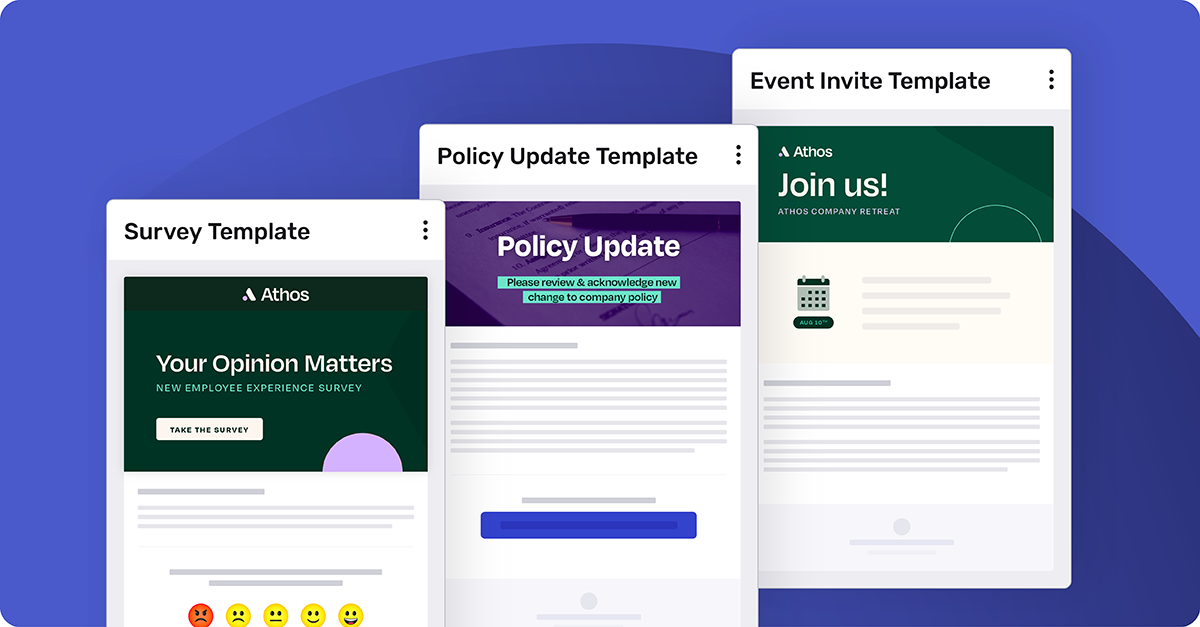
We’ve emphasized the need to measure internal email analytics. Broadcast Insights focuses on internal communications metrics and will meet your needs 100%. The software will show you what’s trending together with open rates, click rates, and content statistics. It will also track engagement metrics that are relevant to the objectives of your business or team.
Insights works hand-in-hand with Email Blasts and has an audience metrics page that shows you everything you need to know. This includes unique opens and the open rate, and unique clicks and the click rate. You can gauge the overall impact of Email Blasts as well as specific metrics for individual employees.
Another invaluable Broadcast feature is Campaigns, which allows communicators to group their internal comms into groups or “buckets.” This enables you to see the metrics that apply to this group of comms.
Are you ready to join the many internal communicators who have improved their email strategies using Cerkl Broadcast? Email Blasts are undoubtedly the way to go. Your emails will look good and you’ll have the benefit of real-time insights to evaluate effectiveness.
Additionally, we’re excited to have the opportunity to show you how you can transform your internal email campaigns into powerful tools that will improve employee engagement and strengthen alignment and productivity within your organization. The key is contained in our free hands-on guide that explores the best practices and proven strategies to improve email click-through rates. Don’t miss it.
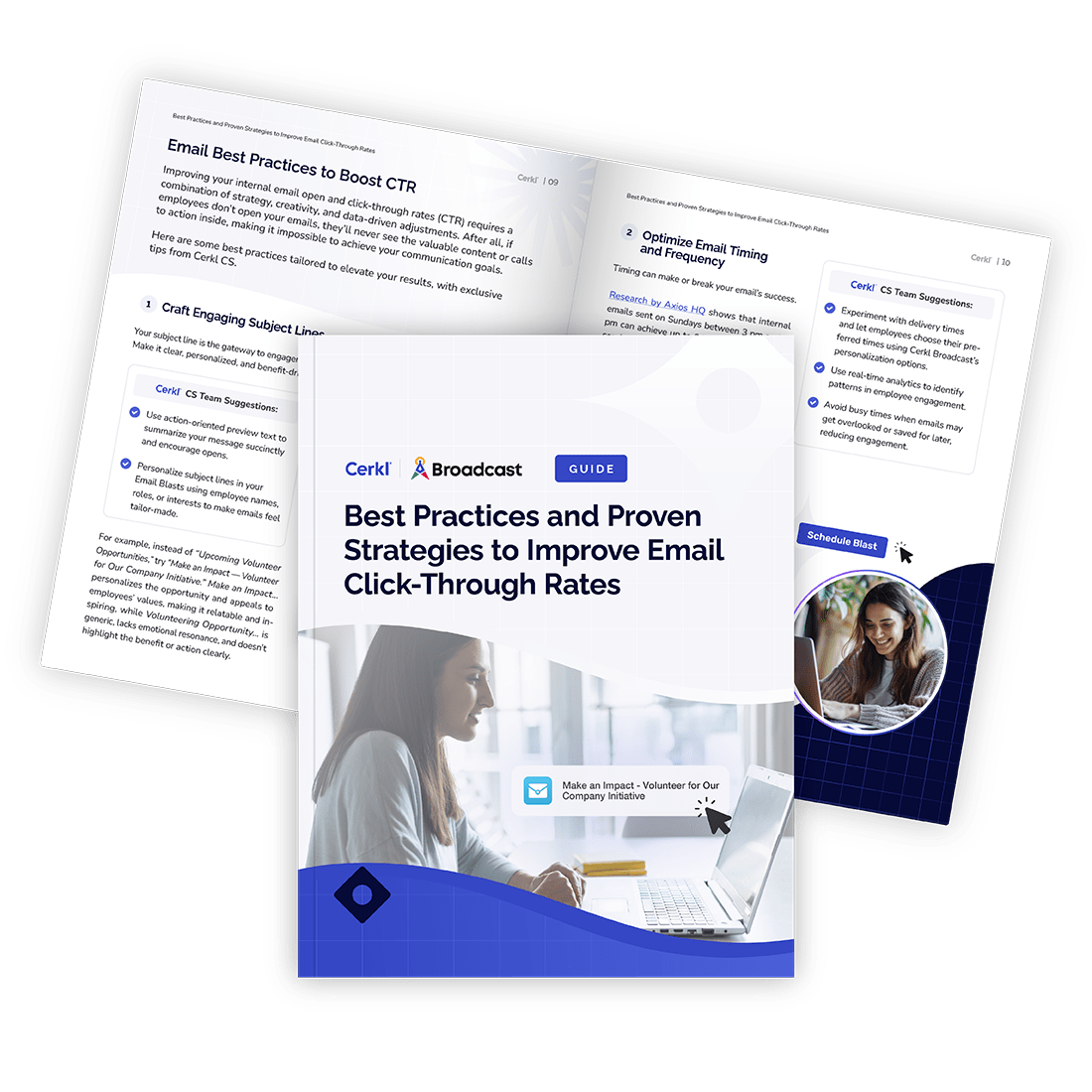
What is a typical example of an internal email? There are many different types of internal emails organizations send. Typical examples include policy updates and staff changes. An internal email might also tell certain employees about meetings or conferences.
What is the difference between internal and external email? An internal email is intended for people within an organization while external emails are for those outside, including customers and suppliers.
How do you write a good internal email? There are some very simple but effective internal email best practices that help people write good internal emails. A good starting point is to think of a punchy subject line followed by short, relevant messaging that will engage employees.
Why do we send internal emails? Internal emails are a means of communicating with employees. Generally, they’re good for sending basic information, reminders, and important notifications.

Revolutionize your internal comms with minimum effort.